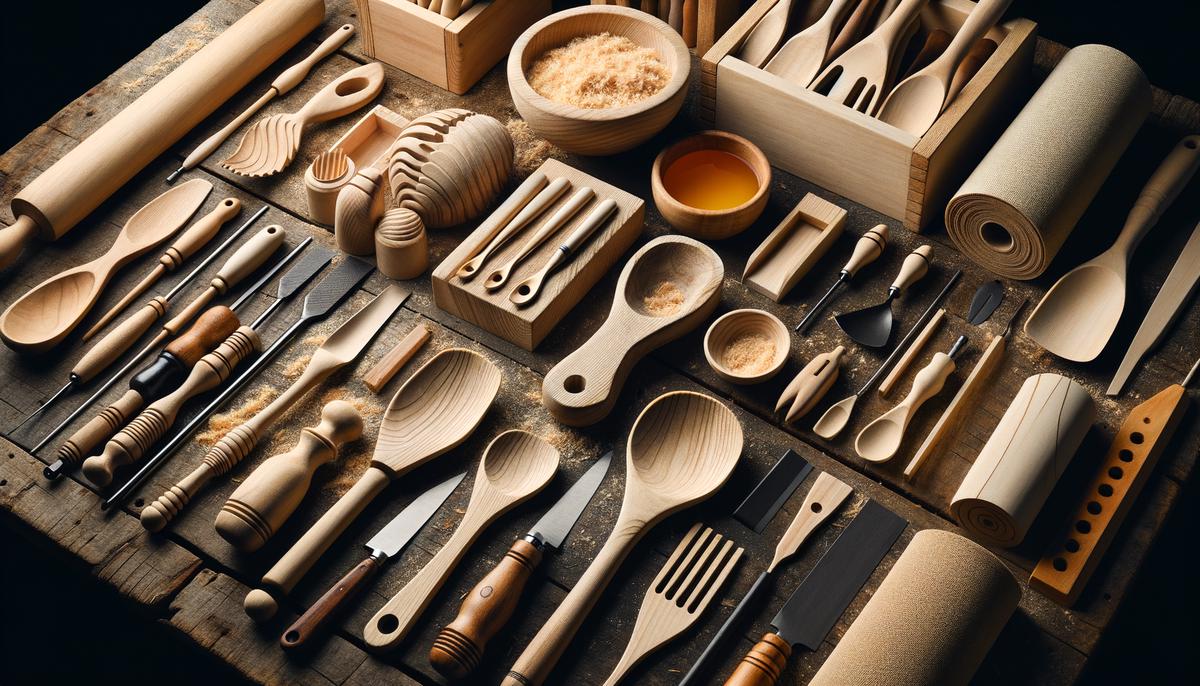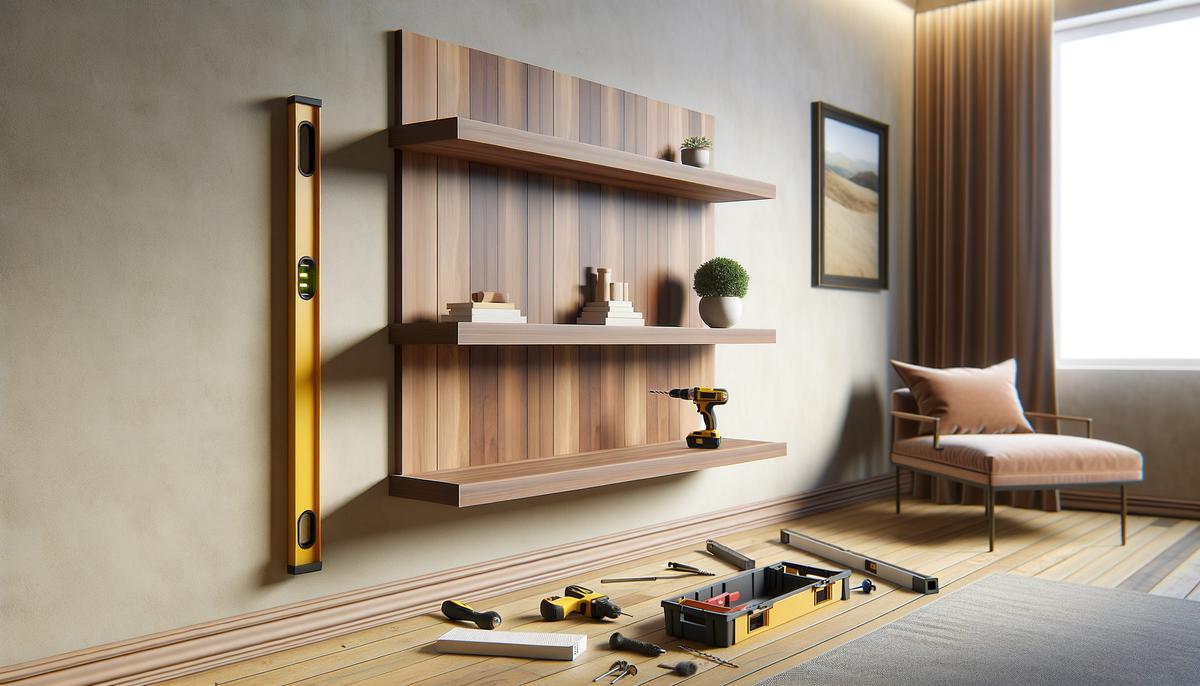1. Picture Frames
Picture frames offer a straightforward yet satisfying project for intermediate woodworkers. They require minimal materials but allow for creativity. To begin, select high-quality hardwood like oak, maple, or cherry. Measure and cut the wood to match the desired frame dimensions, using a miter saw for precise 45-degree angle cuts at the corners.
Assemble the frame using wood glue on the corner joints and reinforce with nails or screws. For added stability and a cleaner look, consider using decorative corner braces. Sand the frame thoroughly to remove rough edges, then finish with varnish or paint to match your interior décor. Add a glass pane, backing board, and hanging hardware to complete the project.
This project hones precision skills in measuring and cutting while offering freedom to experiment with various finishes and designs.

2. Kitchen Utensils
Crafting kitchen utensils is a rewarding project for intermediate woodworkers. Unlike larger furniture pieces, utensils require focus on detail and a deeper understanding of the material. Start with simple items like spoons and spatulas using hardwoods such as walnut, cherry, or maple for durability and food safety.
- Begin by sketching your design on the wood.
- Use a bandsaw or jigsaw to cut out the rough shape.
- Refine it with carving tools.
- Maintain an ergonomic form for comfort and balance.
- Sand thoroughly, starting with coarse grit and progressing to finer grits for a smooth finish.
- Apply a food-safe finish like mineral oil or beeswax to protect the wood and enhance its natural beauty.
For more advanced projects, consider creating intricate designs like salad servers with decorative handles or unique ladles. This project improves carving skills and produces functional, handmade items that add charm to any kitchen.

3. Wooden Boxes
Wooden boxes offer versatility in both function and aesthetics. They can serve as storage solutions, decorative items, or personalized gifts. Start by determining the box's purpose, which will guide your design and material selection. Hardwoods like oak or cherry are ideal for durable boxes, while softer woods like pine work well for lighter, decorative pieces.
Use a table saw or miter saw for precise cuts. You'll need six pieces: the bottom, four sides, and the lid. For intermediate woodworkers, challenge yourself with joinery techniques like dovetail or rabbet joints to add strength and visual appeal.
Assembly steps:
- Glue and clamp the side pieces, ensuring everything is squared and aligned.
- Once dried, attach the bottom piece.
- Add the lid (hinged or simply placed on top).
- Sand thoroughly, focusing on smoothing edges and surfaces.
- Finish with stain to enhance the wood grain and polyurethane for protection.
For added touches, consider felt lining, decorative inlays, or personalized engraving. This project develops skills in precision and finishing, resulting in practical or decorative pieces that showcase your craftsmanship.

4. Shelving Units
Building custom shelving units combines functionality with woodworking skill. Begin by deciding on the type of shelf you want to create – a simple floating shelf, a complex bookcase, or tiered display shelving. Choose wood based on intended use: pine or cedar for lightweight decorative shelves, oak or maple for heavy-duty, load-bearing units.
Measure and cut your wood precisely using a circular saw or table saw. For floating shelves, you'll need additional hardware like brackets or concealed mountings. Assemble shelves using wood glue and screws or nails. For bookcases or tiered shelving, use a framing square to ensure alignment and level.
Sand all surfaces thoroughly, progressing from coarse to fine grits. Apply stain or paint to match your decor, followed by a protective sealant. When installing, ensure shelves are level and securely attached to wall studs for safety and appearance.
"A well-crafted shelf is not just a storage solution, but a piece of art that enhances the room's aesthetic while serving a practical purpose."
This project improves skills in measuring, cutting, and assembly while creating practical additions to your living space.

5. Coffee Tables
A coffee table is an excellent project for intermediate woodworkers, combining functionality with the opportunity to showcase craftsmanship. Begin by selecting high-quality hardwood like walnut, oak, or cherry. Measure and cut pieces for the tabletop, legs, and any additional features like a lower shelf or drawers.
For the tabletop, consider using biscuit joinery or dowels to join multiple boards seamlessly. Design legs based on your skill level and available tools – straight cuts with a miter saw or more elaborate turned legs with a lathe. Attach legs to the tabletop using sturdy joinery like mortise and tenon joints or metal brackets for support.
Finishing steps:
- Sand the entire table thoroughly, progressing from coarse to fine grits for a smooth finish.
- Apply wood stain to enhance the grain.
- Follow with multiple coats of polyurethane for protection against spills and wear.
This project challenges skills in precision, joinery, and finishing, resulting in a functional and stylish centerpiece for any living room.

These woodworking projects offer intermediate craftsmen the chance to hone their skills while creating practical, attractive items. From simple picture frames to complex coffee tables, each project provides unique challenges and rewards. By focusing on precision, finishing techniques, and attention to detail, woodworkers can produce pieces that are both functional and showcase their growing expertise.
- Haught R. The Complete Manual of Woodworking. Knopf; 1996.
- Jackson A, Day D. Collins Complete Woodworker's Manual. HarperCollins; 2005.
- Flexner B. Understanding Wood Finishing: How to Select and Apply the Right Finish. Reader's Digest; 2010.
